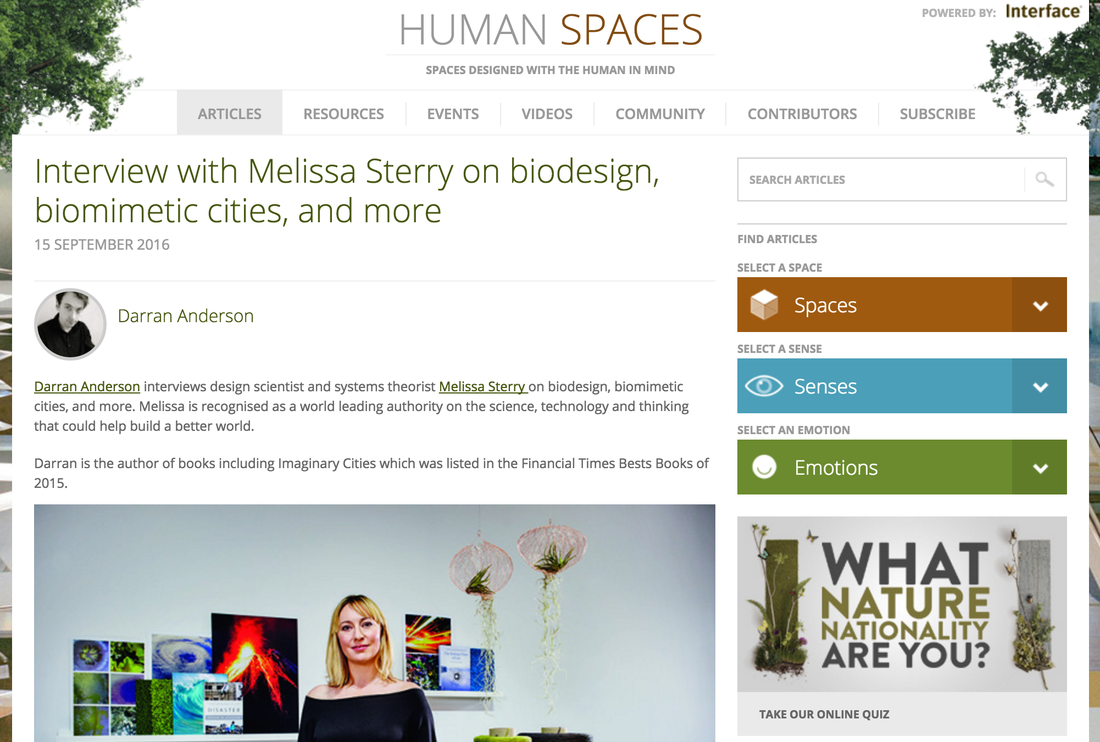|
Many thanks to the inspirational Darran Anderson, author of the 'Financial Times Best Books of 2015' listed Imaginary Cities, for his thought-provoking questions in this interview with Human Spaces. Extract: "Darran: We tend to focus on the macrocosm of the city but you’ve shown there’s much to learn from the microcosm: crystals, cells, flora and fauna, metabolic processes and so on. Have we been dwelling too much on the shell of architecture at the expense of the biology, chemistry and physics of the city? Melissa: My experience of most late 20th and early 21st century built city architectures has been that of a crescendo of materialism, and of all that it constitutes; ego, inequality, division, ostentatiousness, and superficiality. However, that which has manifested is by no means for want of original architectural ideas, inventiveness, and ambition. There are plenty of wonderfully inspired and experimental projects at the intersection of science, arts and humanities, and slowly, but surely we’re seeing a progression towards more interdisciplinary design thinking and practice. Darran: Part of the problem, your work suggests, is that we tend to resort to limiting binaries – the man-made and the organic, the city and the country etc – and miss the interconnected and inter-dependent processes between all these things. Do we forget that the city is an environment or even a series of environments? Melissa: Are humans really so different from animals? For example, our closest living relatives – chimps – are highly territorial, so much so as to have been observed beating their neighbours to death in turf wars. Arguably, our behaviour is akin to that of chimps, for what are cities, if not demarcations of boundaries? But, like those of chimps, the boundaries we draw are not just culturally specific, but they are species specific. I think it imperative that all they as are stakeholders in our cities remember this, and no less so than architects, planners, policymakers, and financiers." Read more at: http://humanspaces.com/2016/09/15/melissa-sterry-on-biodesign-biomimetic-cities/
0 Comments
Your comment will be posted after it is approved.
Leave a Reply. |
AuthorMelissa Sterry, PhD, chartered design scientist, systems theorist, biofuturist, and serial founder inc. Bionic City® Bionic CityAsking the question "how would nature design a city" since 2010.
Archives
October 2023
Categories#bionics
#biotech #biodesign #bioscience #biomimetics #biotechnology #bioengineering #bioinnovation #bioaesthetics #biorevolution #bioenterprise #biosystems #biocreative #biofuturism #biofutures #biocentric #biofacture #biotecture #biovation #biofiction #biourban #biocities #biolab #bioart #STEM
#STEAM #STEAMED #STEMcomms #STEAMcomms #STEAMEDcomms © Bioratorium Limited & Melissa Sterry
2021 All Rights Reserved |

 RSS Feed
RSS Feed

